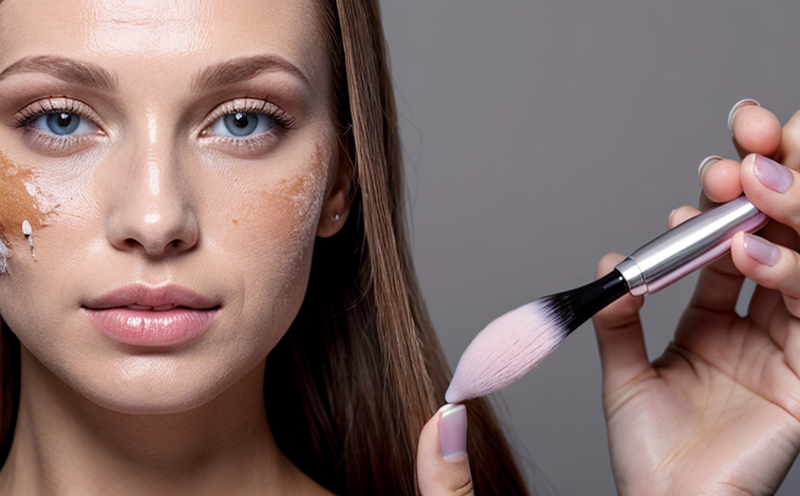Reproductive Toxicity Testing in Cosmetic Ingredients
Reproductive toxicity testing is an integral part of ensuring that cosmetic ingredients are safe and do not pose a risk to reproductive health. This service involves assessing the potential adverse effects of cosmetic ingredients on the male and female reproductive systems, as well as on offspring. The primary objective is to identify any developmental or reproductive hazards associated with exposure to these ingredients.
The testing protocol follows international standards such as OECD Guidelines for Testing Chemicals and ISO/IEC 17025 accreditation requirements. This ensures that the results are reliable, reproducible, and acceptable in regulatory submissions across various jurisdictions worldwide. Regulatory compliance is crucial not only for ensuring product safety but also to avoid potential legal issues and consumer trust erosion.
Understanding reproductive toxicity involves evaluating several key endpoints:
- Effects on sperm production and function
- Changes in menstrual cycle or fertility rates
- Alterations in fetal development and birth outcomes
- Impact on lactation, growth, and development post-birth
The testing process typically involves the following steps:
- Sample Preparation: The cosmetic ingredient is prepared according to the specified protocol. This might involve dilution or formulation into a suitable vehicle.
- In Vitro Studies: Initially, in vitro studies are conducted using cells derived from reproductive organs (e.g., Leydig cells for males and granulosa cells for females). These studies assess cytotoxicity and endocrine disruption potential.
- In Vivo Studies: For more comprehensive assessment, in vivo studies may be required. This involves exposing experimental animals to the ingredient and monitoring reproductive parameters over an extended period.
- Data Analysis: The data collected from these studies is analyzed using statistical methods to determine any significant adverse effects.
The results of these tests are used by companies to make informed decisions about their product formulations. Compliance with regulatory requirements and market demands necessitates a robust approach to reproductive toxicity testing, ensuring that only safe ingredients reach the consumer market.
Why It Matters
The importance of reproductive toxicity testing cannot be overstated in the context of cosmetics. Consumers expect products they use daily to be not just effective but also safe, particularly when it comes to ingredients that can come into contact with sensitive areas of the body.
Regulatory bodies worldwide have implemented stringent guidelines aimed at ensuring safety during all stages of product development and distribution. For instance:
- The European Union’s Cosmetics Regulation prohibits the use of substances that are considered harmful to reproductive health.
- In the United States, the Food and Drug Administration (FDA) requires manufacturers to ensure that their products do not contain ingredients linked to reproductive toxicity.
Failure to comply with these regulations can lead to significant financial penalties, product recalls, and damage to brand reputation. Moreover, non-compliance may result in legal actions from consumer advocacy groups or lawsuits filed by affected individuals.
The potential long-term health impacts of reproductive toxicity are profound. Exposure during critical developmental periods can lead to serious congenital defects, infertility issues, and other lifelong conditions. Therefore, ensuring the safety of cosmetic ingredients is a responsibility shared between manufacturers, regulatory bodies, and consumers.
Scope and Methodology
The scope of reproductive toxicity testing in cosmetic ingredients encompasses both male and female reproductive systems. The test aims to identify any potential adverse effects on fertility, pregnancy outcomes, and fetal development. This is achieved through a combination of in vitro and in vivo studies.
In vitro studies use cell cultures derived from various organs involved in reproduction, such as the testes (for males) and ovaries (for females). These studies are primarily focused on assessing cytotoxicity and endocrine disruption potential. Cytotoxicity refers to the ability of a substance to cause cellular damage or death, which is crucial in determining if an ingredient can harm reproductive cells.
Endocrine disruption involves evaluating whether the cosmetic ingredient interferes with hormone signaling pathways. This can have significant impacts on reproduction and development. For instance, certain chemicals can mimic estrogen or androgenic hormones, leading to developmental abnormalities.
In vivo studies provide a more holistic view of reproductive toxicity by exposing whole animals to the test substance under controlled conditions. These studies are designed to capture systemic effects that may not be apparent in in vitro settings. Key parameters include sperm count, motility, and morphology in males; estrous cycle regulation, pregnancy rates, and litter size in females.
The methodology is standardized according to international guidelines such as OECD (Organization for Economic Co-operation and Development) and ISO/IEC 17025. These guidelines ensure that the testing process is reproducible and consistent across different laboratories. Compliance with these standards enhances confidence in the test results, making them acceptable for regulatory submissions.
Additionally, the use of advanced instrumentation such as flow cytometers, histopathology analysis tools, and bioinformatics software aids in accurate data interpretation. These tools provide detailed insights into cellular responses and molecular mechanisms involved in reproductive toxicity.
Environmental and Sustainability Contributions
- Reduction of Chemical Exposure: By identifying potentially toxic ingredients early in the development process, this testing helps minimize chemical exposure to consumers. This reduction can prevent long-term health effects that could otherwise lead to increased healthcare costs.
- Promotion of Sustainable Product Development: Ensuring that cosmetic products are safe for human reproduction also contributes positively to environmental sustainability. Safe ingredients reduce the likelihood of contamination and waste associated with unsafe products.
Moreover, by adhering to stringent regulatory standards, this testing promotes responsible sourcing practices. Manufacturers can avoid using harmful substances derived from unsustainable or environmentally damaging processes.





